Apple before retail
While the idea of Apple not having its own retail stores is now difficult to imagine, prior to Apple's first decade of running its own retail operations the company found itself in an increasingly dire situation. Computers had originally been sold through speciality stores like ComputerLand and independent resellers in a support relationship with Apple.
After leaving Apple to found NeXT in 1985, Steve Jobs had hoped to create a series of boutique retail stores to sell users on the advantages of higher quality, better designed computers. However, NeXT lacked the retail savvy and resources to build out a significant retail presence, and instead ended up abandoning its hardware sales in 1993 in hopes of selling its software to enterprise customers who better appreciated its value compared to Windows.
Through the 1990s computer sales in general moved to department stores and big box retailers, which offered a larger selection at lower prices but provided little assistance for customers, leaving buyers to make complex purchasing decisions largely on their own, looking at little more than a price tag and a confusing list of hardware specifications. Apple's ability to highlight the difference between its Macs and generic PCs grew tremendously narrower, particularly as retailers found they could slap together their own store brand PCs and make more money.
In 1996, Apple announced plans to reach consumers by building a chain of "cybercafes" that would feature the company's products, allowing users to surf the web and play games while drinking coffee and eating food.
The company partnered with Landmark Entertainment, which had been building minor theme park-like attractions including the Star Trek Experience in Las Vegas and a Jurassic Park attraction at Universal Studios. The first stores were supposed to be built by late 1997, starting with a 15,000 square foot store located in Los Angeles and expanding to London, Paris, New York, Tokyo, and Sydney, Australia.
A year later, Apple confirmed that it had shelved its cybercafe plans, apparently blaming Landmark for the lack of progress. Apple had registered the AppleCafe.com domain and promoted the new cybercafes as "coming soon" on its website.
While also suffering from a crisis of confidence in its operating system development efforts and its future platform strategies in general (in a world that had been taken over by Microsoft), Apple was running into the equally serious problem of not being able to bring its products to market, so that even if it could deliver something buyers wanted, it would be difficult to present its offerings and make a sale.
Apple opens an online store
After Jobs returned to Apple, the company devoted attention to its own internal retail efforts on the web itself, launching an online Apple Store in late 1997 in conjunction with a simplified new line of Macs using G3 processors. The store was built using the WebObjects server technology that Apple had acquired along with NeXT less than a year earlier. It enabled customers to build custom PowerMac configurations online for the first time.
Jobs' NeXT had previously worked with Dell to build its online retail operation, but after being acquired by Apple, Dell quickly scrambled to rid itself of WebObjects. Its chief executive Michael Dell had told a Gartner Symposium audience that summer that, were he in charge of Apple, he'd “shut it down and give the money back to the shareholders.â€
In launching Apple's new online store that fall, Jobs announced Apple would instead be targeting Dell, saying, "with our new products and our new store and our new build-to-order, we're coming after you, buddy."
Apple ventures into retail
The problem with selling differentiated PCs was also affecting other PC makers, including Gateway. After first starting out with a direct sales model patterned after Dell, the company launched its own Gateway Country retail stores in the late 90s, with poor results. While Gateway rolled out lots of stores relatively quickly, in hindsight it was apparent that it had chosen poor locations that didn't have the traffic to sustain them, in addition the to fact that Gateway didn't have strong products to pull people into its stores in the first place.
Apple wanted to do retail right; it was painfully aware of its dysfunctional relationships with brick and mortar retailers, including Sears, Best Buy, Circuit City, Computer City and Office Max. Apple's Macs sat, frequently off and collecting dust, while retailers continued to promote cheap generic PC and their own assembled machines, something poorly captured in the staging of a vaguely flattering Macworld portrayal (below) of a 1992 Macintosh Performa placed next to washing machines at Sears.
Alongside its online Apple Store efforts, Apple announced a new retail program with CompUSA in late 1997 that created a "store within a store" area devoted to Apple products in each of the chain's 140 US outlets, each staffed with Mac-savvy employees who were paid by Apple. In the same press release advertising the success of its new online store, Apple took great pains to mention the importance of its retail relationship with CompUSA.
After outfitting San Francisco’s downtown CompUSA store, Apple reported that Macs sales had jumped from 15% of overall store sales to 35%. Apple also put its own employees to work in various chain retail outlets, acting to help inform customers and making sure that Macs were being displayed in working order. The company’s investment in store within a store retail with CompUSA was estimated to cost Apple between $25-75,000 each month, but it was delivering results that partnerships with other retail stores weren’t.
Â
On page 2 of 3: Building a retail strategy, opening retail stores
Less than two years later, Jobs recruited Millard 'Mickey' Drexler, CEO of the Gap and later J. Crew, to Apple's board, as Apple began work to assemble its own team of retail, development, and real estate experts pursuant to building out its own retail stores. Apple subsequently hired Ron Johnson, a vice president of merchandising at Target, as its senior vice president of retail operations; George Blankenship from the Gap as its vice president of real estate; Kathie Calcidise as its vice president of retail operations; and Sony’s Allen Moyer as its vice president of development.
Between 1997 and 2000, Apple slashed the number of third party retail outlets that were selling Macs from 20,000 to 11,000. In 1998, Apple's then chief of operations Tim Cook explained that the company needed to “cut some channel partners that may not be providing the buying experience [Apple expects]. We're not happy with everybody."
Facing the dotcom crash and the economic downturn that affected most retailers in 2000, Apple decided to pulled its products out of Sears, Best Buy, Circuit City, Computer City and Office Max entirely to focus all of its retail efforts with its CompUSA "stores with a store." Apple later returned to Sears, only to pull out again in 2001. Apple also ended its shaky retail partnership with Circuit City in 2001.
Apple begins opening retail stores
In May of 2001, Apple began opening its first retail stores, rejecting the trend toward efficient big box retail and instead working with architects and interior designers to craft smaller boutique stores featuring flourishes including hardwood floors, glass stairways, presentation theaters and a Genius Bar providing technical support. The new stores also featured lots of usable Macs and iPods customers could try out in the store.
Apple's success in retail wasn't universally anticipated. The May 2001 MacWorld article "Apple Stores: Sale of the Century?" quoted consultant David Goldstein of Channel Marketing Corp. as saying of Apple, "it makes absolutely no sense whatsoever for them to open retail stores."
Goldstein complained that Apple's retail strategy wasn't going to work because consumers 'haven't indicated that they're having trouble finding outlets that sell Macs,' stating that "It's another case of Apple being Jobs driven and not consumer driven."
Goldstein also wrote his own article entitled, "Sorry, Steve: Here's Why Apple Stores Won't Work," where he said, "I give them two years before they're turning out the lights on a very painful and expensive mistake." TheStreet.com complained, "It's desperation time in Cupertino, Calif."
Apple was entering retail just as Gateway was abandoning its failed efforts to transition from a mail-order company to a retail chain. The most successful PC makers were Dell and HP, both of which relied up on third party retailers and direct sales, rather than trying to sell their products in their own stores. Goldstein's criticism of Apple's retail efforts were not unique.
Apple's stores also generated some controversy by shifting the company's attention from its old dealer network to the new retail operations that Apple maintained full control over and could change at will in reaction to what worked and what didn't.
On page 3 of 3: Key to Apple's survival, future of Apple Retail
The company's retail operations rapidly expanded, with 27 opening in 2001, followed by another 23 in 2002, and 22 more in 2003 when Apple expanded beyond the US to open its first stores in Japan. New international stores in the UK were among the 27 spots to open in 2004. Another 34 stores opened in 2005, including the first in Canada. Another 34 opened in 2006, 33 in 2007 expanded Apple's reach to Italy, while 46 opened in 2008, including the first in Germany, Switzerland, China and Australia. New stores in France were among the the 51 opened in 2009 and 39 more in 2010 expanded Apple's retail presence to Spain.
There are now more than 358 Apple Retail stores, including flagship locations in Boston, New York City, Chicago, San Francisco, Tokyo, Osaka, London, Sydney, Perth, Montreal, Munich, Zurich, Paris, Beijing, Glasgow, Honolulu and Shanghai. Rather than just being an expensive way for Apple to reach consumers, the company's retail stores have earned top profits far higher than competing retail stores of any kind. The company reports that average revenue per store is now $10.7 million.
Apple's retail operations didn't just help keep the company afloat as a source of revenue either. They also served as a distributed convention center, allowing Apple to host events and launch products. Apple cited its retail store traffic as the reason it pulled out of Macworld Expo, and in 2007 Jobs told a Forbes journalist, "Our stores were conceived and built for this moment in time - to roll out iPhone."
Without highly trafficked retail stores in prime shopping locations, Apple would have found it far harder to ship impressive volumes of iPods every winter, or draw highly publicized launch crowds as it did with the last five generations of iPhone and with two releases of iPad. It would also not have seen the sharp uptick in quarterly Mac sales, which have jumped from 659,000 in the first quarter of 2001 to 4.89 million in the company's last reported quarter.
Along with those new Macs, Apple sold over 6.6 million iPods, more than 17 million iPhones, and 11.12 million iPads. When Apple first opened its retail stores ten years ago, none of those products even existed, but today they account for nearly 40 million units per quarter for a company that a decade ago was struggling to sell less than a million per quarter.
The future of Apple Retail
Apple hasn't just opened fancy new stores over the past decade; it's increasingly used innovative new technologies to operate them. Apple began using handheld devices built by Symbol to enable mobile in-store transactions in 2005, then shifted to modern Easy Pay systems based on an iPod touch outfitted with a card reader and bar code scanner (a product other retailers have since begun using).
This holiday season, Apple launched a self-checkout Easy Pay option for customers accessed from their own iOS devices, using the Apple Store app. Customers can ring up purchases directly to their Apple ID account, minimizing the need to interact with employees. When help is needed, the app also lets customers link up with a sales person, get support from the Genius Bar, or see when the next workshop is being held.
In October, Apple executives stated that they planned to open 40 stores by the end of the year, with 75 percent of them outside the US. Within in the US, Apple said it would also be working to expand existing stores, which it said now feel "too constrained" to properly serve customers.
While dramatically expanding its outlets globally and working to make them smarter and more automated, Apple also launched a new directive last year to remove scores of unnecessary products from its Apple Store shelves: retail software boxes. One year ago, Apple opened the Mac App Store, enabling users to download software directly, often at a much lower price.
Six months later, it removed a series of software products from its shelves, including all retail boxes of iWork '09, Aperture 3, iLife '11, Apple Remote Desktop, and all Jam Packs for GarageBand. Apple has since shifted other Pro Apps, including Final Cut Pro X, Motion, Compressor, Logic Pro and MainStage to its Mac App Store exclusively.
Apple can continue to open new stores worldwide at a faster pace than it has over the previous decade, given its cash hoard and experience in opening new retail outlets. At the same time, the company continues to evaluate how to best build and operate stores, highlighted in the $3.15 million project that began last month to develop a "new prototype" Apple Store in Palo Alto, California.
"Our Palo Alto store was one of our first retail stores when we opened it nearly a decade ago and it's been incredibly popular," Apple spokesperson Amy Bessette said. "We are planning a beautiful new store just a few steps away, building on everything we've learned from our customers in Palo Alto and around the world."
The prototype project's architectural firm Bohlin Cywinski Jackson has designed a number of major Apple Stores around the world, winning multiple awards for its work on London's Covent Garden, New York's Upper West Side and China's Pudong stores.
Apple's Pudong store in Shanghai
 Daniel Eran Dilger
Daniel Eran Dilger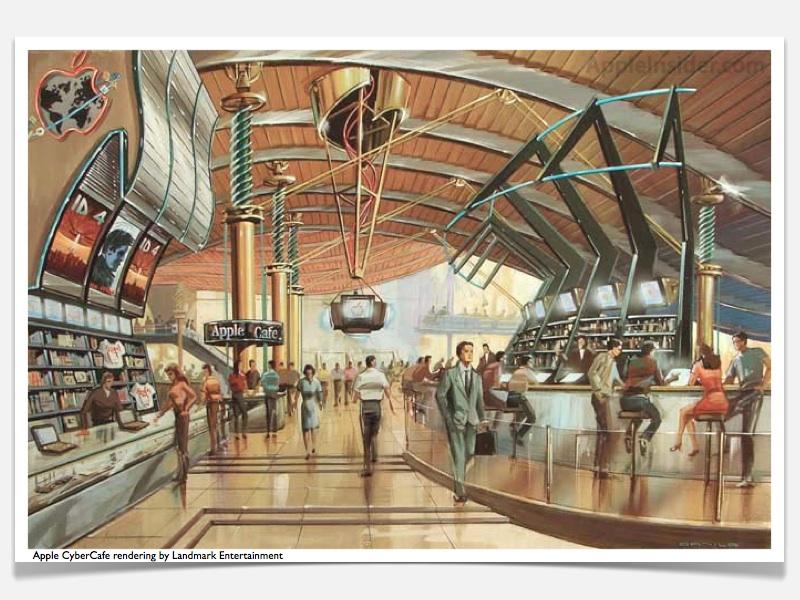
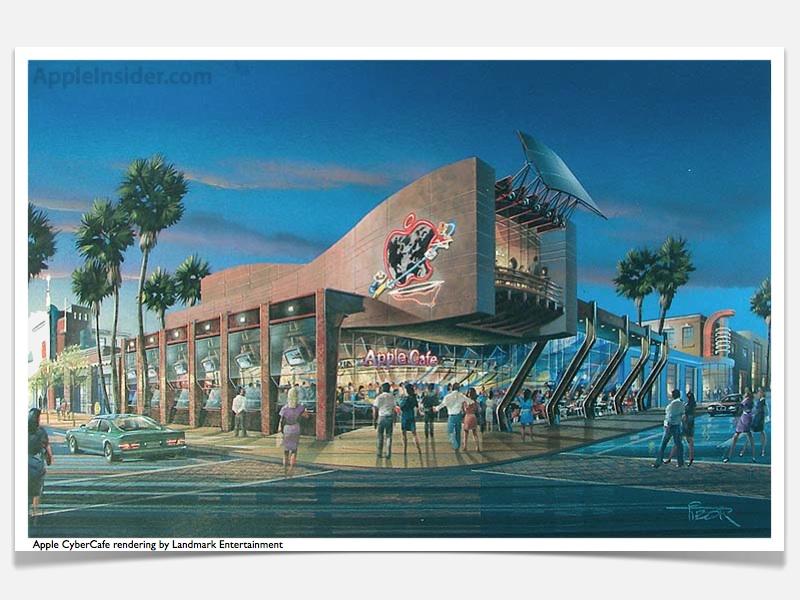
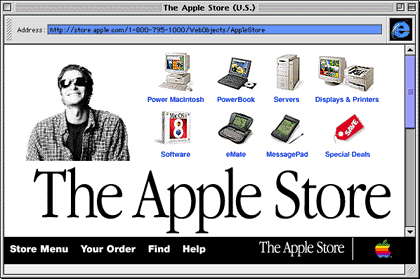
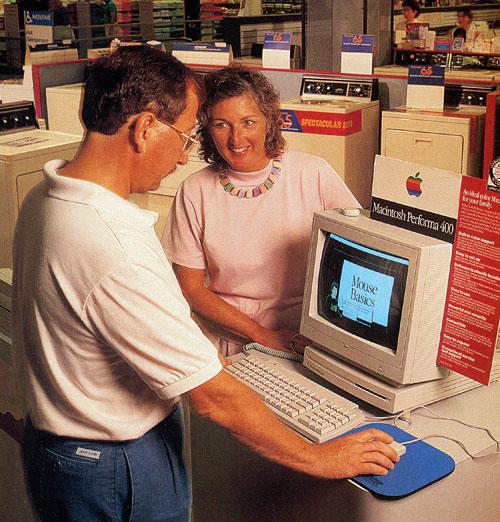
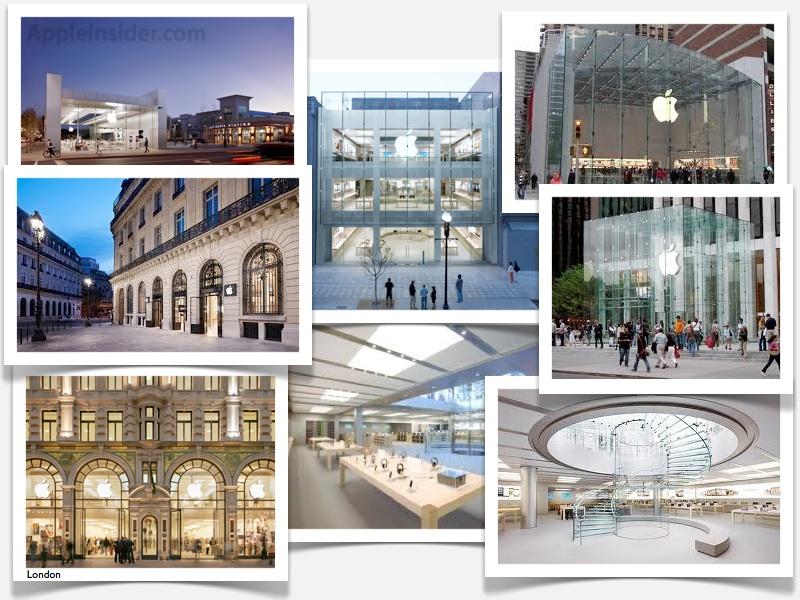
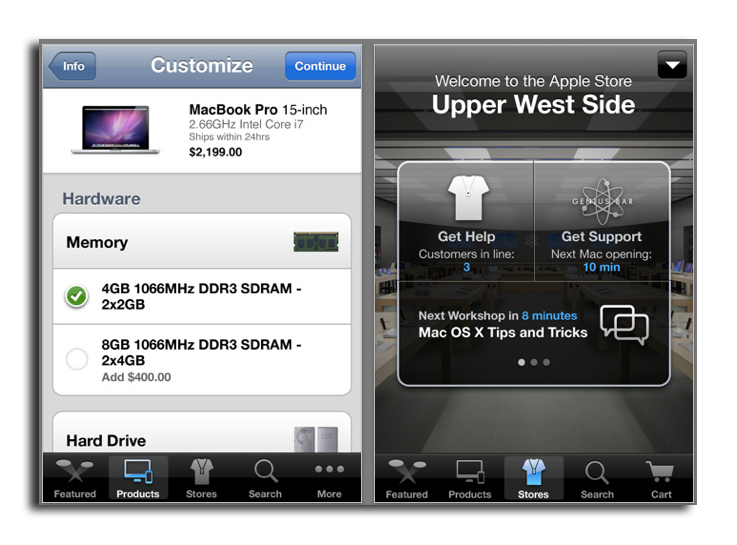
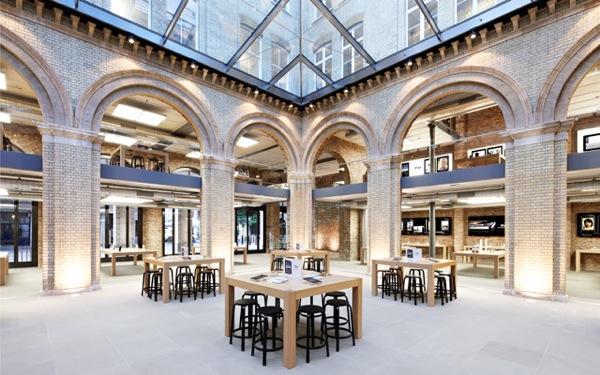
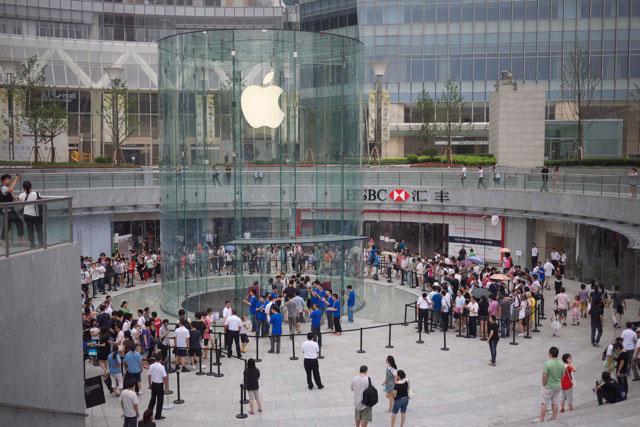
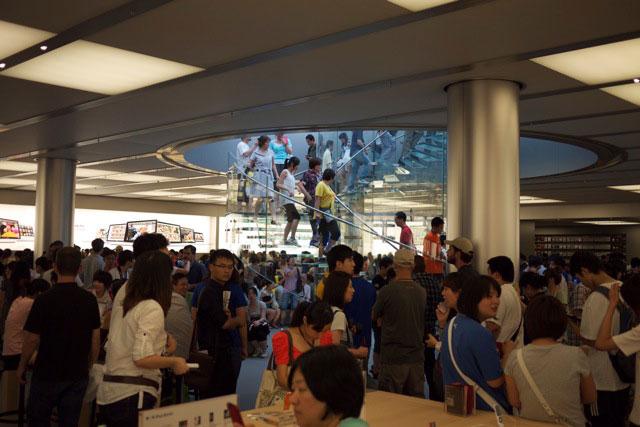







-m.jpg)






 Christine McKee
Christine McKee
 Wesley Hilliard
Wesley Hilliard
 Malcolm Owen
Malcolm Owen
 Andrew Orr
Andrew Orr
 William Gallagher
William Gallagher
 Sponsored Content
Sponsored Content









24 Comments
Can anyone tell me how to get in touch with this David Goldstein of Channel Marketing? I've got a bridge in Brooklyn that I'd like him to sell. (The right man for the right job!)
They only need stores as long as they continue to come up with new products, that people need explained. After the culture "gets" a product, they can buy it anywhere, including online. So the future of the stores depends on whether they can continue to be disruptive without the Steve.
p.s. the link to page 2 at the bottom of page 1 is broken
This is ridiculous ....
Haven't people gotten past these "Look Into The Future" presentations yet?
This is shopping in the future: Dad, Mom & the kids gather 'round the viewscreen, pick what they want,
complete with demoholos and the friendly FedUPS man drops it at thier doorstep in 2 or 3 days.
Science!
The Gateway store failed because it wasn't a store. It was a showroom. A friend of mine called it the Gateway Computer Museum. Gateway Store employees could only assist customers with information, advice, and brochures. People eventually figured out the folly of burning gasoline to go to a store that sold nothing. It was easier and cheaper to call Gateway toll-free, and it resulted in an actual purchase.
I went to the Gateway store to buy a computer (I had not yet achieved enlightenment) and found out they didn't sell anything. I complained to an employee about it, and he told me "that's why it isn't called a store." When I left the store, I checked the sign. He didn't even know that the sign over the entrance to his workplace said "store."
I remember reading predictions that the Apple Store would fail because the Gateway Store had failed, but that prediction could only have been made by someone who had never been to a Gateway Store. The Apple Store sold stuff, the Gateway store sold nothing. Later, Dell tried to compete with Apple by opening up its own non-stores, using the Gateway stores as a model. I was not surprised when that failed.
How can anyone expect to succeed with a store that doesn't sell anything?
They only need stores as long as they continue to come up with new products, that people need explained. After the culture "gets" a product, they can buy it anywhere, including online. So the future of the stores depends on whether they can continue to be disruptive without the Steve.
p.s. the link to page 2 at the bottom of page 1 is broken
And how do you know this or did you just make it up? iPhone has been out since 2007 and a large number are sold at stores. The iPod has been out since early 2000's and people still go to the Apple stores to try and buy them. As this article states, the stores serve many purposes and greatly enhance sales. Even if Apple doesn't release any new class of products and only continue to update the current platforms, the stores could still be necessary and successful.